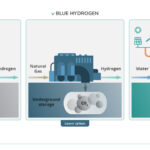Hydrogen – Think Safety First
Hydrogen is a gas with some peculiar characteristics: it is colorless, odorless, and tasteless, so it is very difficult for humans to detect it without the help of gas detectors. Its density in relation to air is approximately 0.08989 kg.m-3, therefore its molecule is the smallest, the fastest, and the one with the lower viscosity.
Hydrogen leaks happen very easily. There are leaks that are only detected with hydrogen and not with other gases, such as nitrogen. When a leak occurs, the escaped gas is concentrated in the highest points of the installation, and this concentration is not uniform. Therefore, the installation must be designed to promote natural ventilation while also ensuring the existence of forced ventilation (exhaust system).
Hydrogen flammability limits are between 4% and 74.5%, meaning that the gas can ignite within this range. The ignition energy of hydrogen is 10 times lower than any other hydrocarbon. For this reason, leakages need to be totally avoided in the installation with the correct sealing of each component and the entire infrastructure.
All the purges must be channelled to the outside, there is the need to evaluate and prevent flammable mixtures with air and to control the atmosphere locally and within the hydrogen range of action. Local ventilation, security signs, and the exclusion of fire sources, including the safety information prohibiting smoking in the area, are extremely important. Note that when in flame, hydrogen is also difficult to visualize since the flame is not visible to the naked eye, and it does not pollute the air when burning.
An important note regarding hydrogen compatibility with other materials, particularly ferrous alloys, and titanium: hydrogen weakens this type of material, so they should not be used together.
For safety reasons, the entire installation (equipment, piping, storage, etc.) must be connected to a grounding system and monitored to confirm the installation’s water tightness. Whenever there is a need for an intervention, the installation must be inert with gaseous nitrogen (or another neutral gas such as helium or argon).
All the material and equipment used in the installation must be compatible with hydrogen, due to the embrittlement phenomena of low-carbon structural steel.
For Hellonext, safety is extremely important, and keeping people secure is our main priority. We understand that with the contribution of all the people involved, all accidents may and must be avoided. More than believing that all accidents can be prevented, we understand that developing a safety and security culture in all our projects is an essential condition for operating not only hydrogen but also electric charging.
To know more about Green Hydrogen, you can contact us here. We will be happy to answer your questions and know more about your business challenges.





